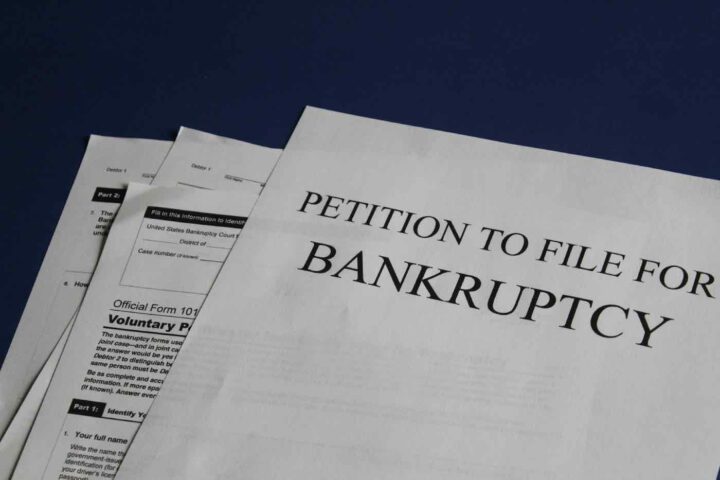What is Chapter 13 Bankruptcy?
Considering bankruptcy can be an intimidating experience. However, understanding the details of what is chapter 13 bankruptcy can be empowering, offering a lifeline to those with significant debt. The process can be difficult, with claims from some that chapter 13 ruined their life.
The good news is, bankruptcy is a temporary setback to a better financial future.

Chapter 13 Bankruptcy – What is it?
Commonly referred to as a wage earner’s plan, Chapter 13 bankruptcy is a legal remedy that offers a structured repayment plan for individuals with a regular income who cannot manage their financial obligations. This plan facilitates the repayment of certain debts over an agreed time period, typically between three to five years.
The length of the repayment plan depends on the debtor’s financial situation. For instance, if a debtor’s current monthly income is below the state median, the plan may span three years. Conversely, if the debtor’s income exceeds the state median, the plan may stretch over five years.
Pros and Cons of Chapter 13
As with any significant financial decision, it’s crucial to weigh the pros and cons of filing for Chapter 13 bankruptcy. One of the primary advantages is that it can halt foreclosure proceedings, allowing individuals to retain their homes. It also provides a structured repayment plan that can make debt repayment more manageable.
However, this type of bankruptcy does have its drawbacks. For instance, it can significantly impact your credit score, and the bankruptcy notation remains on your credit report for seven years.
Eligibility Criteria
Filing for Chapter 13 bankruptcy requires meeting specific criteria. These include being an individual as opposed to a business entity, not having any recent bankruptcy discharges, and having unsecured debts less than $394,725 and secured debts less than $1,184,200.
Furthermore, it’s essential to have a regular income and the ability to make monthly payments towards the debts.
Debts Eligible for Discharge
Not all debts can be discharged in Chapter 13 bankruptcy. While certain unsecured debts like credit card debt and medical bills may be partially or entirely discharged, others like child support, alimony, and certain tax debts must be paid in full.
Impact on Your Credit
This form of bankruptcy can have a significant impact on your credit score. It stays on your credit report for seven years, causing an initial drop in your credit score. However, with responsible financial habits, you can rebuild your credit over time.
Distinguishing Between Chapter 7 and Chapter 13 Bankruptcy
Both options offer debt relief solutions but serve different purposes. Chapter 7 bankruptcy involves liquidating non-exempt assets to repay creditors, while Chapter 13 allows debtors to keep their assets while repaying their debts over time.
When to Consider
It is a suitable option for individuals with a regular income who can repay their debts over time. It’s particularly beneficial for those facing foreclosure or repossession, as it can halt these processes and provide the opportunity to catch up on missed payments.
Filing Process
The process involves several steps, including finding an attorney, completing credit counseling, filing a petition and paperwork with the bankruptcy court, and creating a repayment plan. A court-appointed trustee will then administer the case and distribute payments to creditors.
Alternatives to Chapter 13 Bankruptcy
Before opting for it, it’s worth exploring alternatives such as debt consolidation, debt settlement, liquidating assets, or seeking debt counseling. These options can potentially provide debt relief without the long-term impact of bankruptcy.
Life Post-Chapter 13 Bankruptcy
This can involve rebuilding your credit and maintaining responsible financial habits. With disciplined spending, timely bill payments, and careful credit usage, your credit score can gradually improve.
Frequently Asked Questions
- How much do you pay back in Chapter 13? The amount repaid under Chapter 13 depends on your income, expenses, and types of debt. The repayment plan typically requires regular payments for three to five years.
- How long does it take? The process can last for several months, with the repayment plan typically spanning three to five years.
- When should you file for it? It may be appropriate when you have a regular income but are struggling to meet your debt obligations.
- What is a hardship discharge? A hardship discharge may be granted if the debtor cannot complete the payment plan due to circumstances beyond their control.
Understanding what Chapter 13 bankruptcy is can provide valuable insights for those exploring debt relief options. It’s crucial to consult with a financial advisor or bankruptcy attorney to determine if it is the best option for your financial situation.


